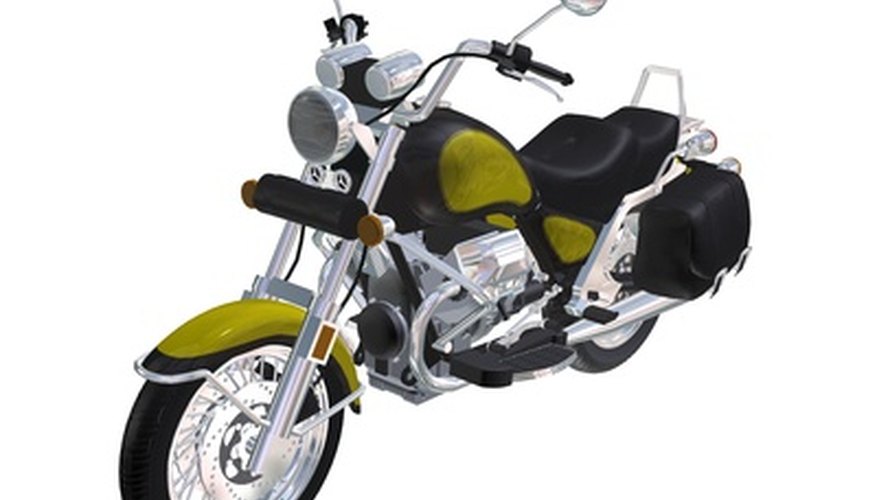
Older motorcycles use mechanical tachometers that operate by means of a cable. The cable connects the gauge to the engine crankcase, and the core of the cable turns at the speed of the engine. The majority of newer motorcycles use single-fire electronic tachometers that interface with the ignition coil and detect the rate of spark generated by the coil to the spark plugs. Repairing a mechanical or electronic tachometer gauge requires a fair degree of expertise. But repairing the system is not a complex task in terms of identifying and correcting problems.
Items you will need
Pliers
Tachometer wiring schematic
Voltage meter
Assistant (optional)
Mechanical
Step 1
Locate the tachometer cable connection at the underside of the gauge. Remove the end of the cable from the gauge by turning the connector counterclockwise with pliers. String the end of the cable over the handlebars or ask an assistant to hold the cable so you can see the square rod at the end of the cable core.
Step 2
Start the motorcycle and observe the rod at the end of the core. The rod should be turning, which indicates the core of the cable is okay. If the rod turns, the tachometer needs to be repaired by a technician or replaced. If the core doesn’t turn, proceed to the following step to replace the cable.
Step 3
Remove the tachometer cable at the crankcase by turning the connector fitting counterclockwise with the pliers. Pull the cable off the crankcase. Install the new cable by threading each fitting clockwise at the crankcase and at the back of the tachometer. Tighten each connection with the pliers.
Electronic
Step 1
Identify the negative wire at the ignition coil by the “-” sign next to the wire connection terminal on the top of the coil. Trace the path of the negative wire from the coil to the back of the tachometer. Connect the black voltage meter clip to this connector at the back of the gauge.
Step 2
Trace the path of the red wire at the back of the tachometer to the initial 12-volt source. Depending on the motorcycle and the particular tachometer gauge, the source may be an adaptor with several wire terminals or a bus bar with a series of brass terminal screws. Attach the red voltage meter clip to the initial 12-volt source at the adaptor or the bus bar.
Step 3
Switch the voltage meter to 12 volts. A reading between 1.0 and 1.5 volts indicates the proper resistance in the circuit. The absence of a reading indicates a problem in the electrical circuit. Motorcycle vibration causes wiring connections to loosen. Check the connections at the back of the tachometer, the adaptor or the bus bar and repeat the resistance test before proceeding.
Step 4
Identify the secondary source wire on the back of the tachometer gauge. This may be a green or yellow wire that connects to the adaptor or another brass terminal on the bus bar. Connect the black meter clip to the secondary source terminal on the back of the tachometer.
Step 5
Switch the voltage meter to 12 volts. Turn the motorcycle ignition switch to the “On” position and observe the reading on the voltage meter. With the black meter clip attached to the secondary source terminal on the gauge and the red meter clip attached to the secondary 12-volt source at the adaptor or the bus bar, the meter should read 12 volts. In the event all tachometer connections are secure and the meter does not show a reading, you may need to replace the tachometer.
Tips
- Remove the tachometer and have it checked by a technician before purchasing a replacement.
- Wire colors and circuits vary depending on the motorcycle and tachometer. Refer to the owner’s manual for tachometer wiring information.
References
Tips
- Remove the tachometer and have it checked by a technician before purchasing a replacement.
- Wire colors and circuits vary depending on the motorcycle and tachometer. Refer to the owner’s manual for tachometer wiring information.
Writer Bio
William Machin began work in construction at the age of 15, while still in high school. In 35 years, he's gained expertise in all phases of residential construction, retrofit and remodeling. His hobbies include horses, motorcycles, road racing and sport fishing. He studied architecture at Taft Junior College.



